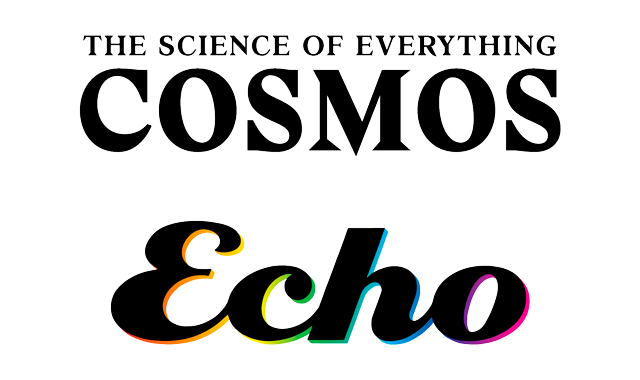
Brought to you by Cosmos Magazine and The Echo
International collaboration of researchers sequence the genome of the pure desert dingo.
Last year, it was revealed that dingoes (Canis lupus dingo) in Australia have pure ancestry and that there is little interbreeding with domestic dogs – just 0.6 per cent.
As of today, the full genetic sequence of Sandy Maliki, a wild-born pure Australian desert dingo has been published in Science Advances. Led by researchers at La Trobe University, including dingo advocate Professor Bill Ballard, this international collaborative effort has confirmed that pure dingoes are intermediate between wolves (Canis lupus) and domestic dog breeds (Canis lupus familiaris).
Sandy Malaki was discovered in 2014 as a three-week-old pup near the Strzelecki Track in the central Australia desert, along with her sister and brother. Sandy became of international interest when she won the World’s Most Interesting Genome competition in 2017.
Scientists have lined up Sandy’s genome against a Greenland wolf (Canis lupus orion), five domestic dog breeds including the German shepherd, and the oldest known dog breed, the Basenji, which originated in Africa.
A previous study looking at single nucleotides of DNA (known as SNPs) placed dingoes as sisters to the Akita and Chow Chow, with the Basenji between this group and the wolf. However, with the whole genome sequenced, the relationship of the dingo to domestic and ancestral canine lineages can finally be resolved.
From this research, we are also able to gain insight into the desert dingo’s biology. For example, the number of copies of a pancreatic ‘amylase’ gene can assist understanding of its dietary adaptations.
‘A pure dingo has only one copy of the amylase gene, whereas domestic dogs have multiple copies – which we show influences the gut microbiome and, we predict, affects what dingoes eat,’ says Ballard. ‘Based on this new knowledge, we hypothesise that dingoes are far less likely to eat farm animals, including sheep. If we’re correct, what farmers currently assume are dingoes killing their stock, are likely to be feral wild dogs.’
This five-year study was a culmination of research undertaken by experts in microbiology, computational biology and veterinary science, from 10 institutions across six countries including Australia, Denmark, Norway, Germany, USA and England, and is a huge step forward in the preservation of this native keystone species.
Interested in having science explained? Listen to our new podcast.
This article was originally published on Cosmos Magazine and was written by Qamariya Nasrullah. Qamariya Nasrullah holds a PhD in evolutionary development from Monash University and an Honours degree in palaeontology from Flinders University.





Humans didn’t evolve to eat junk food. We are not genetically designed to handle straight glucose very well because there were no concentrated sources in our environment. Therefore humans don’t eat junk food?
Humans eat junk food because it tastes good and is easy to catch, like sheep are to dingoes. Your just implying that sheep aren’t good for them. Maybe they need to consult a nutritionist before eating my goats.
“we hypothesise that dingoes are far less likely to eat farm animals, including sheep” That’s an assertion,what’s your argument?.
Could you please tell us where you draw the line between Dingo and Feral Dog? If it’s only 90% Dingo, does that make it European? Does that apply to Aboriginals too?
“pure dingoes are intermediate between wolves (Canis lupus) and domestic dog breeds (Canis lupus familiaris)” So they are an uniquely Australian breed of an African animal. The Australian Feral Goat and the Australian Feral Cat are also uniquely Australian breeds of African animals. They don’t exist anywhere else in the world and are different to the foreign varieties.
Dingoes are dogs that were brought over from Asia by humans during the last ice age. These dogs are now feral. They interbreed with other feral dogs brought here by other humans. I wouldn’t ask what percentage European an Aboriginal was if he was he was trying to eat my baby, that wouldn’t really matter.
I would suggest readers look up the term ‘Pathological Science’
Steinberg’s very disturbing comments are based on an incomplete knowldge of animal and social sciences mixed up with many assumptions. The study of Genomes can be understood only within various socio-ecological contexts of organisms involved. The recipe does not make the cake. Studies of NSW dingo show the behaviours of intact dingo group are distinct from feral dogs, from hunting pattern to prey to seasonal behaviour shifts etc. Further Assumptions and statements built of bits of neo-eugenics in comment are not only incorrectly understood but present as demeaning even racist comments against dingo, people and the specialists behind such work. Pathology, of course, is another branch of science concerned with disease and injury. But to understand sciences, Philosophy of science a better area from which to begin.
Oh Dear,
You just can’t use science to ague against ingrained prejudice. It is clear Christian has missed the whole point of the article.
Dingos tend to remain pure-bred and those are less likely to eat your goats (a hideously destructive introduced pest, like sheep and cattle )
As far as breeding goes , it is sufficient to possess .0000001% , or less, of aboriginal DNA to be classified as indigenous, but dingos are more likely to be 100% pure Australian natives, here for two thousand years before the pyramids were built in Egypt.
I have seen nothing to convince me that either group have any history of eating babies and I believe this is another example of ‘Pathological Prejudice’.
Cheers, G”)
Yeah he’s still stuck in that aryan bullshit from 100 years ago. Oh for the glory daze . I’ve had plenty of dogs in 55 years , and we got a purebred dingo pup in the 70 s ,, came from the Walsh river west of cairns . An electricity worker found the litter out in the bush. We got a male about 3 weeks old. We had our own pups as well a bit older than the ding. He was definately not the same . Smelt like a fox for about 6 weeks . He stunk . Plus he didn’t bark, he’d howl occasionally. Never bark.. He kept running away at 3 weeks old. He’d come back after a few days . Always thought we’d lost him . Then he’d just appear at dinner time . He could climb trees , fantastic . The hunt away pups were a month or so older than ding , but he out paced them easily over the coastal rocks . They’d wimper and need picking up. He beat them up at the start but got used to them eventually . Became friends. .. When they got older if visitors arrived walking up the track , the dogs would go down as a pack barking at them and ding would bolt back up in the bush away from them. He was really shy and took a long time to trust somebody he didn’t know. He wasn’t savage or nothing like that . He was a one man dog, he only really did what my friend said . He trusted me but when it came to it he’d follow his person , not me. … Late arvo we’d be cooking dinner in our bush camp and the mice would attack. Ding would climb up on the frame of the wall , above my head , while I was chopping up on the bench and nail mice as they ran around . He’d sit up there looking down at me, above my shoulder . The wooden frame was about as thick as a hoe handle . He had no trouble balancing on that . Nearly in the dark . He could see really well in the dark. He was a bit more like a cat in a lot of ways . Aloof , climb trees , only come to you when he felt like it . Never bark , kept apart from the other dogs , the best hunter . He knew where everything was out there . He’d tell you something was there . He left the dogs behind . They couldn’t keep up with him, so fast in the bush , and quiet . He’d appear by your side , ultra silently. A lot different to a dog. Sort of skinnier and taller. Long skinny legs , big paws . He never ever looked plump, always lean looking . A really great companion and a marvel with what he could do compared to a dog. Like the difference between a trained circus performer athlete and a regular fit person. No comparison . It was like it was instinctive with him, no one taught him what to do, he just knew already . He’d pick up on what was happening just by observing . Didn’t need to be shown what to do like a normal pup . I wish I had another one . There incredibly unique animals . Worth preserving. .. True wild dingoes would stay away from people . They don’t like them. They can smell you a long way off, better than a dogs nose . Dog crosses tho, they sneak in and try and pinch something . They’re more familiar with people . Makes them more dangerous. There was a wild Shepard X female around the hills near federal googan for a few years . Someone caught her and kept her for a while then she got away . She’s was really dangerous after that cause she was more used to people and peoples chooks , pets , etc. She nailed heaps of domestic animals for years . Bred with the other wild domestic dogs . They’re the worst . People go out and leave their dogs for a few days , then they meet their buddies at night and all go out for a play. But they kill chooks sheep goats , chase horses cattle . Bad dogs . Untrained dogs . Stupid owners who don’t train them . That how it starts . Dogs with no manners . That go wild .